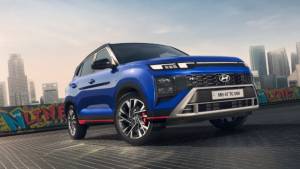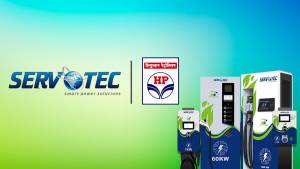New Verna-cular
Team OD
Updated: July 24, 2013, 06:33 PM IST
The year was 1998 and Hyundai had just launched its first car, the Santro. After reading OVERDRIVE's first ever small car comparison test where the Santro was chosen as the winner, I convinced my dad to buy the car and everybody at home immediately fell in love the hatchback. Just like us, many other families went on to own Hyundai's. The Korean manufacturer followed up with several other launches and soon became the second largest manufacturer in India. One of the other cars launched then was the C-segment car, the Accent. The car went on to contribute strongly to Hyundai's success in India. Today almost 13 years later I am driving the fourth generation Accent or the Verna as it's called in India. In every other segment except for the hatchbacks, radical change has been constant for Hyundai, which you will sample when the car arrives at dealerships this May.
Hyundai is not known to make attractive cars but the new Verna is a striking exception. The company's fluidic sculpture design language makes its debut here in India on the Verna marking a comprehensive design shift and to great effect at that. The car carries forward the futuristic design from the Hyundai RB concept shown at the 2010 Moscow International Motor Show and happily, very little has changed in the production car. The hexagonal grille along with upswept headlamps and L-shaped fog lamps give it a very sporty and premium appearance. The coupe-like profile sets it apart from its rivals while the shoulder line is well defined like in the i20 but is more angular and flows from the front bumper to the rear tail lamp. Complementing the shoulder line is a smaller crease that runs across the lower part of the doors, giving the sides of the car a lot of character. Sixteen-inch alloys are standard on the top-of-the-line variants and fill the wheel arches substantially.

The high tailgate is sharply reminiscent of the older car while the integrated spoiler like top lip is unique to the segment and adds a couple of inches to the height of the tailgate. India spec Vernas get a twin exhaust tip to go with the sporty design and it blends well with the bumper. On closer scrutiny, the sharp styling is backed up by even shut lines, good panel fit and finish levels as well. The new Verna has transformed radically from the previous generation model which in its time may have been stylish without much longevity. The new Verna is a much more stylish and well proportioned car. It is definitely one of the best looking C-segment cars in the country and this will be its strongest USP.
The spacious interiors offer generous leg, shoulder and head room both front and rear. For a car that targets the City and the Vento, the Verna certainly feels roomy but by how much begs a comparison test. Driver seat height and steering wheel rake and reach can be adjusted manually to enhance the space proposition. The interior design also follows the fluidic sculpture mantra with the centre console flowing all the way to the centre armrest. The steering wheel is borrowed from the i20 and goes well with the dashboard layout. The beige and dark brown interior scheme has been specially developed for the Indian model while the brushed aluminum inserts in the armrests and centre console as seen in the international model has been replaced by faux wood for India. In my opinion the 1.6-litre variants should have had the brushed aluminum inserts instead of faux wood. Leather upholstery is standard in the top-of-the-line variant with lesser variants getting fabric upholstery. A push button ignition has been offered for the first time in a C-segment car and adds to the sporty feel. A unique, class first air ioniser has been specially developed for the Indian Verna. It basically emits negative ions that neutralise pollutants, bacteria and suspended particles in the car to keep the air clean.
The new Verna is available in both petrol and diesel variants with not just two but four powerplants. Hyundai wants to appeal to a wider audience and is thus offering a 1.4- and 1.6-litre Gamma petrol engine and U-II diesels. We only drove the 1.6 petrol and diesel Vernas which other than a manual transmission are also available with a four-speed automatic. Hyundai's diesel engines have always been more powerful than its petrols and the new Verna is no exception. While the 1.6 VTVT petrol engine produces 123PS of power at 6300rpm and 154Nm of peak torque at 4200 rpm, the 1.6 VGT diesel produces 128PS of power at 4000rpm and a massive 259Nm of peak torque from as low as 1900rpm. These figures make the Verna the most powerful petrol and diesel C-segment car. The 1.4-litre petrol engine produces 107PS at 6300 rpm and peak torque of 135Nm peak torque at 5000rpm.The 1.4 diesel produces 90PS at 4000rpm and peak torque of 220Nm of peak torque.
Going by the power output of the 1.6 diesel, we expected a vast improvement in terms of power delivery over the previous generation Verna's 1.5-litre engine. And it did feel more linear with smoother acceleration making the Verna more driveable. Turbo lag has reduced but thanks to the linear power delivery the sudden boost from the VGT turbo acting like a shot in the arm which defined the last generation cars engine has reduced considerably.
Driving in the city is effortless, and doesn't require frequent gear changes. The flexibility of this engine is remarkable. Mid range power is healthy and the high torque rating helps in keeping the revs low. Driving in the ghat sections leading to Kodaikanal, the car never felt out of breath and comfortably handled steep inclines. Engine noise is not very high and there is hardly any clatter felt inside the cabin. The engine feels refined at low engine speeds but does get harsh at high revs. The diesel engine also gets a 6-speed gearbox. As in the i20 the gearing is well matched to the diesel motor, extracting the right amount of power to ensure you don't have to keep shifting to a lower gear. When it comes to fuel economy, the Verna features a gearshift indicator that lets the driver know which gear to be ideally driving in to aid efficiency. The ARAI claimed figure for the 1.6 diesel is, 22.32kmpl while the 1.4 diesel returns 23.50kmpl. Both these figures are higher than the SX4 diesel, making the Verna the most fuel efficient C-segment diesel available in the country.
The 1.6 petrol engine comes from Hyundai's Gamma family. It features double overhead camshafts, four valves per cylinder and continuous variable valve timing (VTVT). Superior in refinement to the previous generation Gamma engine, it remains smooth even at high revs. The engine note and behaviour is typical of Japanese cars, silent at low revs and whiny as the revs climb. The 1.6-petrol also makes its power at a very high 6300rpm with the redline coming in at 6700rpm, so typically Japanese. The performance increase is noticeable compared to the previous generation Verna petrol and should match the segment leader Honda City in terms of performance. Unlike the diesel's 6-speed gearbox, the petrol motor is mated to a 5-speed gearbox but to really extract the most out of this engine, one needs to keep it at the higher end of the power band. But when you do that, the refinement levels drop, and the Verna can get noisy. On the highway, the Verna petrol shines. We managed to touch 170kmph effortlessly, and it can cruise effortlessly at 150kmph without straining the engine.
The petrol and diesel 1.6 variants sport a 4-speed automatic transmission option. The automatics are more for city driving and are no good at extracting power from the otherwise very potent engine. The gearbox offers a tiptronic mode but one needs to slot into a lower gear to extract the most out of the engine as the 4-speed automatic doesn't distribute power evenly, making the automatics much slower than the manual transmission Verna.
On the dynamics front, the steering feels very light and proves handy in urban driving and parking speeds. On the highway the steering feels disconnected and has very little feedback. In the ghat roads, the light steering however was a boon. Suspension is via MacPherson struts up front and torsion beam at the rear. The suspension set-up is towards the soft side and we were impressed at how good the ride quality is. The Verna glides over bad roads and feels very composed and comfortable. At higher speeds though, the softly sprung suspension gives way and doesn't feel planted especially on undulated roads. The car can roll about and wallow at times.
Overall, the new Verna is a giant leap forward from the previou

s model. Along with a range of engine options the car comes loaded with a very long features list such as six airbags, rear-view camera, auto-dim mirror, rear parking sensors, leather upholstery, ABS with EBD across all variants, six airbags, electrically foldable and adjustable mirrors, cooled glove box, keyless ignition and much more.
If Hyundai gets the pricing right, this car can be a serious contender in the C-segment. It has everything going for it in terms of styling, all-round appeal, quality, construction and brilliant engine options. With prices expected to be between Rs 7 lakh and Rs 9.5 lakh, the new Verna is all set to take the game ahead in the C-segment.
Price (Ex-Delhi)
Starts Rs 10.9 Lakhs
Starts Rs 10.9 Lakhs
Displacement
1497cc
1497cc
Transmission
Manual
Manual
Max Power(ps)
100
100
Max Torque(Nm)
145
145
Mileage
17.8 Kmpl
17.8 Kmpl
Related Stories
Top Stories
Latest Videos
Most Popular
1
2
1
2
Network18 Updates
Compare














